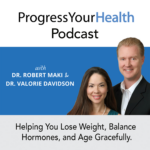

Endometriosis is a condition that affects many women. It is estimated that about 10% of females ages 15 to 49 are affected. I think this percentage of women with endometriosis is much higher than 10%. That is because the only sure way to be diagnosed with endometriosis is to have laparoscopic surgery.
There are many signs and symptoms of endometriosis, but they tend to overlap with other hormonal imbalances. Often it is confused with fibroids, ovarian cysts, and painful, heavy periods to name a few. And like I said, the only sure way to know is having surgery and finding endometriosis in the pelvic cavity.
What is Endometriosis?
Endometriosis is the lining of the uterus has seeded itself elsewhere in the body. The top lining of the uterus is called the endometrium. It is the cells of this lining (endometrium) that is found outside of the uterus. Common places endometriosis is found:
-Fallopian tubes: Sometimes it can cause scar tissue on the fallopian tubes reducing fertility or can contribute to an ectopic pregnancy (which is a health emergency).
Why is there Uterine Tissue Not in the Uterus?
There are many conflicting theories on why the endometrium lining that is supposed to be in the uterus is elsewhere in the pelvic cavity. A long-held theory is in utero when cells are developing; uterine cells are seeded in other areas outside of the uterus. A more recent theory is there is a retrograde of flow during a period. The blood backs up and out of the uterus causing uterine cells to plant themselves anywhere in the pelvic cavity.
New hypotheses are endometriosis is an extension of autoimmune and inflammatory diseases. But plenty of people do not have endometriosis. Why some do and not others? Like mentioned above it could be genetic, autoimmune, lifestyle, retrograde mechanical flow, etc.
The old-school theory of developing in utero has pretty much been put on the shelf. Endometriosis often comes back after laparoscopic surgery. Sometimes it comes back slightly, moderately or its back with a vengeance after surgery. Which is why many women with endometriosis have had more than one surgery.
The big question: What Does Endometriosis Feel Like?
Pain: Pain is the number symptom that women with endometriosis are seeking answers. There are several types of pain that are experienced in endometriosis. And the pain is no reflection of how much endometriosis they have in their pelvic cavity. Some women have minimal endometrial lining seeded outside of the uterus. But report debilitating pain. Other women have stage four endometriosis and have little to no pain. The only way to tell how much lining or endometriosis you have is by laparoscopic surgery. The pain is most commonly felt below the belly button to the top of the pubic bone. It might be all over this area or to the right or left depending on where the endometriosis tissue is located. Some women even report low back pain that is associated with endometriosis.
Types of Pain Associated with Endometriosis:
Associated Symptoms of Endometriosis:
There are many other symptoms that women feel with endometriosis. They can also have nausea, loss of appetite, fatigue. Not to mention the effect on the mood of the woman. It is very frustrating and disempowering to have to deal with these symptoms. And there are not a lot of options out there for endometriosis.
Those mainly are hormone therapy and surgeries. Surgeries being laparoscopic to find and remove the endometriosis lesions in the pelvic cavity. Even in some cases resorting a hysterectomy/oophorectomy (removal of uterus and ovaries). Every treatment plan for endometriosis is different for each woman. And what works for some, may not work for others. So if you are dealing with endometriosis make sure you work with a patient, functional medicine doctor that is going to tailor a treatment that fits for you.
Hopefully is podcast has been helpful. If you have any questions, please leave a comment below or send an email to [email protected]
The post What Does Endometriosis Feel Like? | PYHP 042 appeared first on .
Discover the common and unfamiliar symptoms that you might be experiencing. Get access to cases of real women with hormonal conditions.

In this episode, we return to a listener’s question regarding thyroid dosing in perimenopause. In our previous episode, we answered Tracy’s question about taking estrogen in perimenopause. Tracy also asked us an additional question about her thyroid doses. Tracy does not have a thyroid gland and has been noticing her dose is continually increasing as […]
In this episode, we discuss a listener’s question regarding perimenopause and estrogen hormone replacement. Tracy is concerned because she is still having a period but also has symptoms of low estrogen. She is not sure if she is a candidate for estrogen therapy since she is still cycling. Tracy’s Question: Hi- you’ve discussed in past […]
In this episode we discuss Jenell’s question she submitted on our website (Ask the Dr). Jennell has been having terrible anxiety since entering menopause and it is really affecting her quality of life. Jenell’s Question: Since starting menopause, I’ve had debilitating anxiety, especially bad in the morning. By evening, It practically goes away. I’m 54 […]
In this episode, we discuss a listener’s question. Amanda is 50 years old and starting to have menopausal hot flashes and weight gain. However, she is most concerned about the heart palpitations she is having. Amanda has had a cardiovascular workout and does not have heart disease. Most people might not be aware, but feeling […]
In this episode, we discuss a listener’s question about perimenopause. ‘Maggie’ is in her 40’s and experiencing severe insomnia with anxiety. She has tried supplements and different doses of progesterone with minimal results. She is having so many ups and downs with her insomnia, anxiety, and hormones. She is wondering how long this is going […]
In this episode, we talk about Mary’s hormone concerns after ovarian failure. She is only 34, and in the last 7 years since her ovarian failure has tried many hormone replacement options, all without the success she was looking for. Let’s Read Mary’s Question: When I was 27 years old I was diagnosed with iatrogenic […]